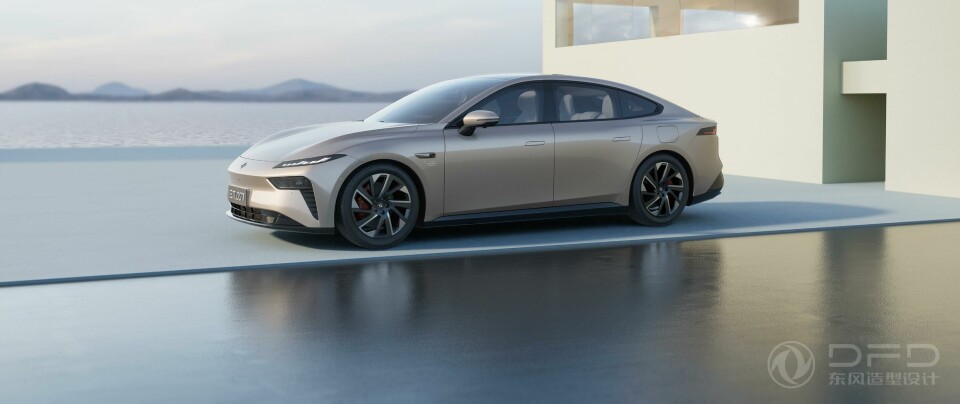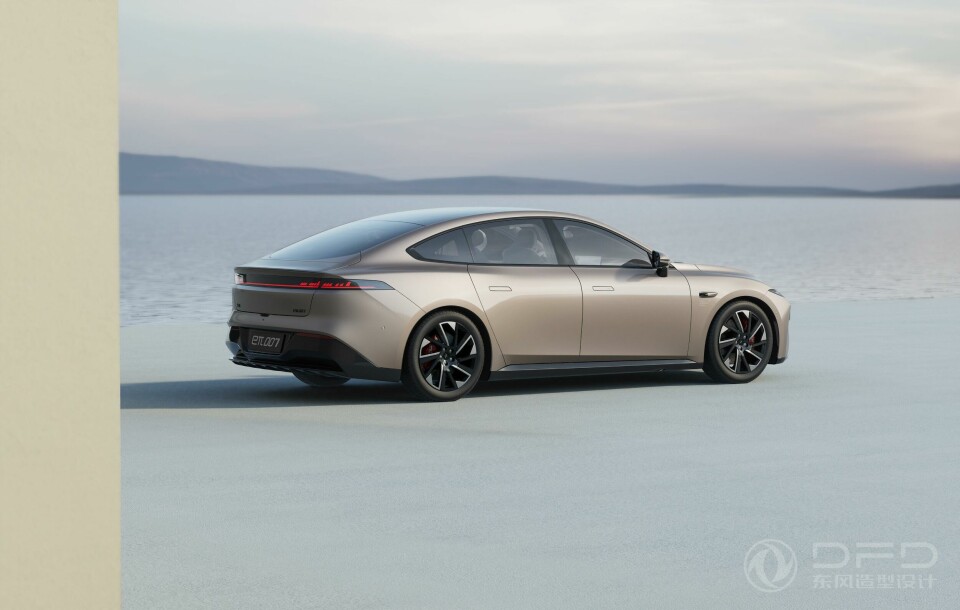
Ancient Chinese philosophy inspires Dongfeng’s new electric coupe
PARTNER CONTENT
This content was paid for by Dongfeng and produced in partnership with Car Design News
The Dongfeng design team looked to Eastern cultures, stories and nature when creating the design language behind the eπ007
Dongfeng has been on a mission to fuse elements of Chinese culture into its designs, but unlike the aggressively-styled Mengshi SUVs shown earlier in September, the brand’s new electric coupe is a sleek, refined and altogether classy outfit.
Released under the new clean energy brand eπ (pronounced e-pie), the 007 was shown in November and is aimed at “restrained yet confident” buyers. Indeed, while the Menghsi design language is angular, geometric and in-your-face, the eπ007 aims to achieve sophistication through simplicity, dialling things back with clean surfaces, a mature front end and sweeping lines that flow from front to rear.

Based on such philosophy, the design team drew on the concept of ‘Yuyu’ which centres on the creation of blank space, allowing silence to speak volumes. This way of thinking has permeated other areas of design – you may be familiar with the expression “reduce to the maximum” for example.
It can be seen from initial sketches of the eπ prototype, too, and incorporates the ideas of three key philosophies: ‘Simple yet Extraordinary’, ‘Human Centric’ and ‘From Origin to Infinite’. This third pillar to the design describes how the 007 was inspired by traditional Chinese designs while also “colliding and evolving to create an infinite future.”

With the production-ready 007, the form is smooth and elegant, with curves and edges that “coexist without conflict.” As part of the Human Centric ideology, the design is naturally simplistic and aims to reflect a “back to basics” approach to life. In addition, the exterior is inspired by Chinese landscapes – and natural crystals in particular, evident in the Prismatic Eye headlights, Rotary Grid Aero wheel hubs, and Skyline-inspired Crystal Grid tail lights.
Traditional storytelling also had a part to play. “It revisits the Chinese allegory of Zhuangzi dreaming of a butterfly,” the team explains, “ingeniously using the butterfly image and employing geometric minimalism to express the ultimate beauty of dynamic and static balance.” (Editor’s note: It is worth reading up on this ancient text to gain a deeper understanding of how this influenced the design team.)
Although the philosophy behind this tale takes a while to digest, the butterfly elements are immediately clear – from the scissor doors that are inspired by a fluttering butterfly, to the light that projects onto the floor beside the door, shaped like an unfolding wing.
The exterior design is partly aesthetic but also functional, with supreme aerodynamics a goal from the outset. Based on Dongfeng’s testing, the 007 achieves a drag coefficient of just 0.209, not far off some recent concept cars that were designed as one-off prototypes. An impressive feat for a production car. At the rear, the tail lights wrap around the entire rear mask and bleed into the wheel arches – accented nicely by the electrically-adjustable spoiler above.
Inside, the interior design follows a core philosophy of Chinese-style subdued elegance, resulting in a wise and refined aesthetic that captures the Chinese spirit of harmony. Like the exterior, the cabin follows a human-centric design that takes into account everything from CMF to HMI – creating a light, comfortable and serene ambience through eco-friendly materials and neutral colours.
Meanwhile, a simple, intuitive user interface is provided through two screens and buttons only where necessary. The design team took inspiration from Chinese poet Li Bai’s verse – “The light boat has crossed the endless mountains” – with a view to “wishing passengers to embark on their journey, shedding the burdens of urban life, and experiencing travel with a light heart.” The HMI design theme is ultimately described as “effortless and zero-burden” and uses simplified shapes and light colours to create a calming, easy-to-use system.
There are three available interior themes, each of which reflects a different Chinese landscape. Underpinning all of these trim levels are several key pillars: Visual, Auditory, Tactile and Olfactory. From an auditory perspective, the interior uses a WANOS panoramic audio system, with hidden speakers within the driver’s headrest.
When it comes to tactility, the interior follows the notion of “gentle protection” and – in a nod to the young, aspirational families that are being targeted – the materials are eco- and baby-friendly. As for olfactory and the sense of smell, a range of Chinese incense fragrances are available. “Chinese culture excels in creating ambiance through the senses,” the design team observes.
At a time where EV design has been accused of being increasingly homogenous, it is refreshing to see a brand dig deep into its culture for new inspiration that has been as yet untapped.
















